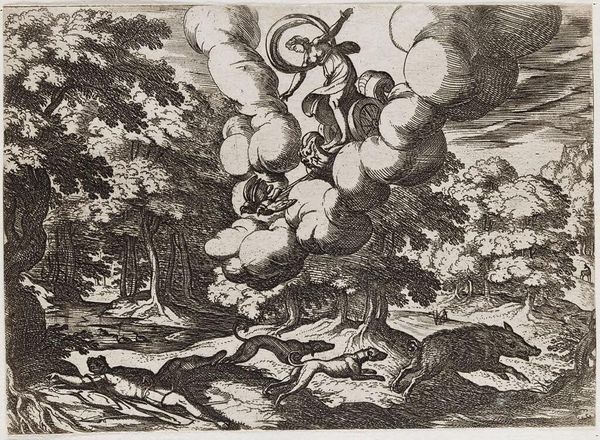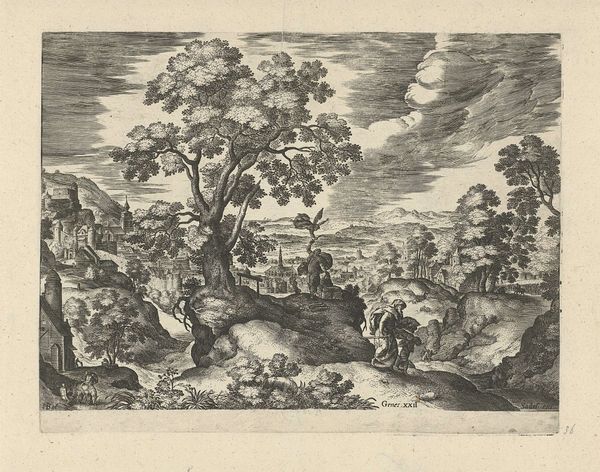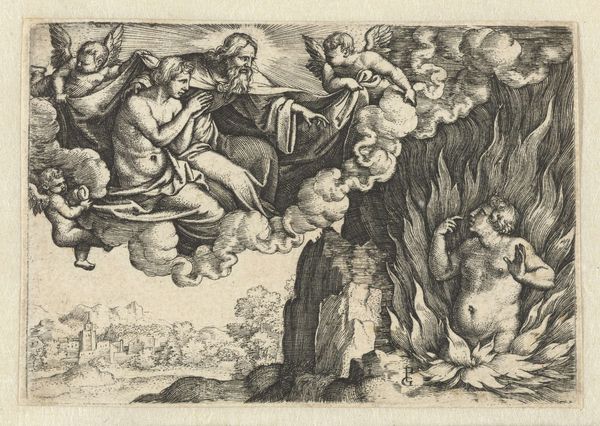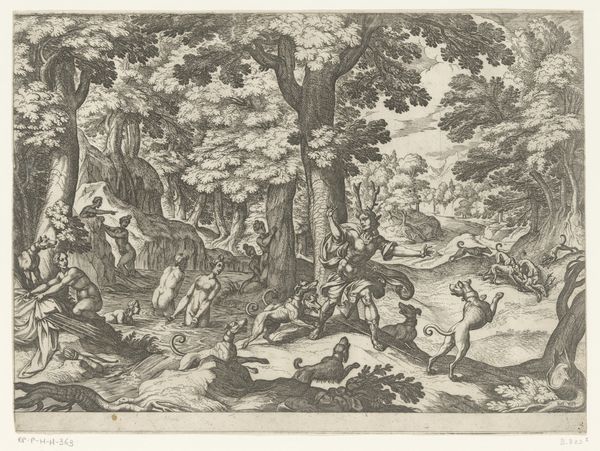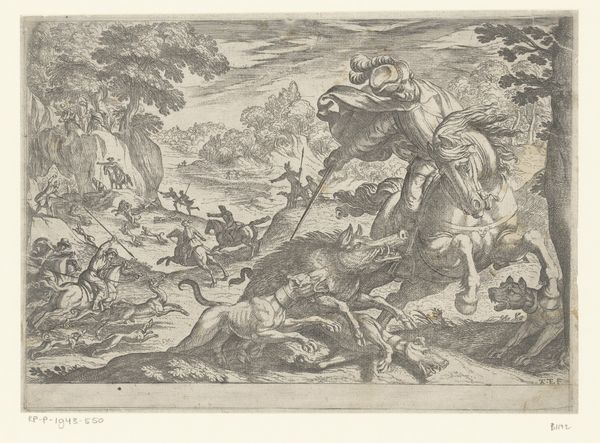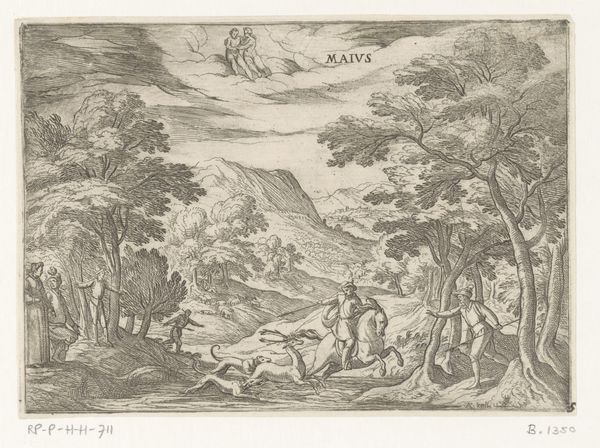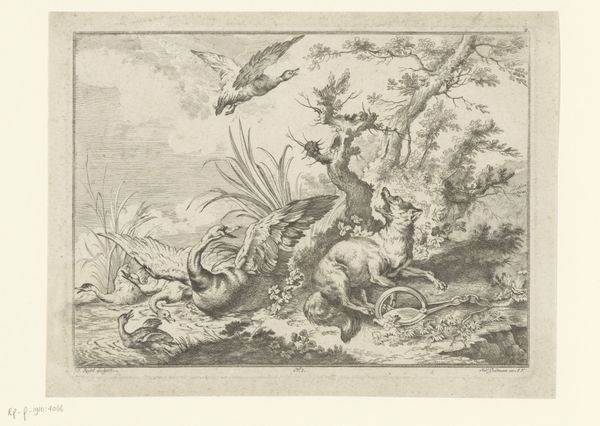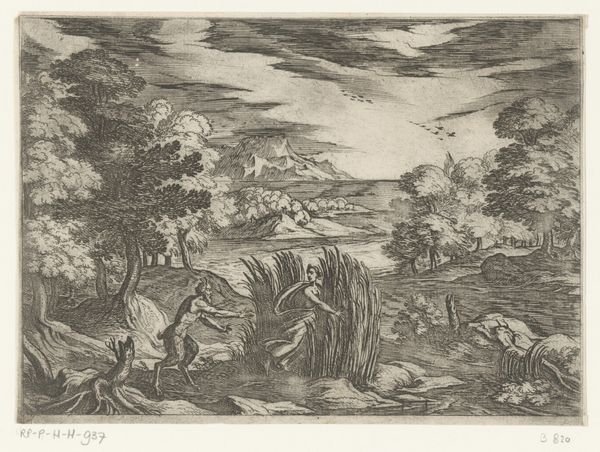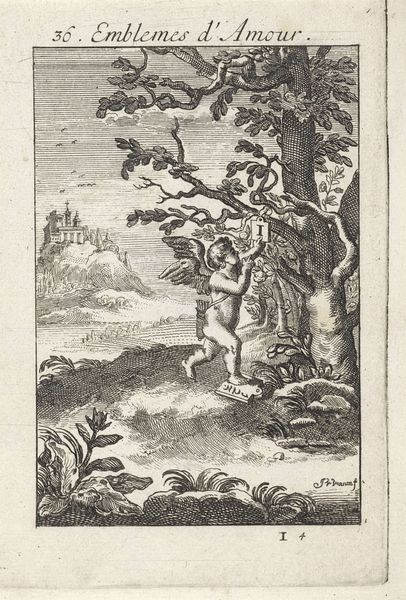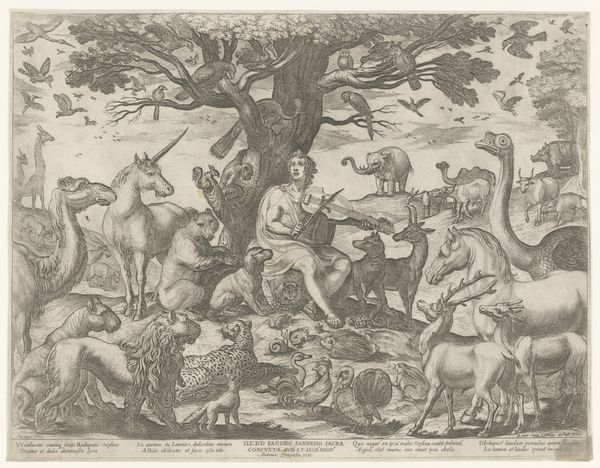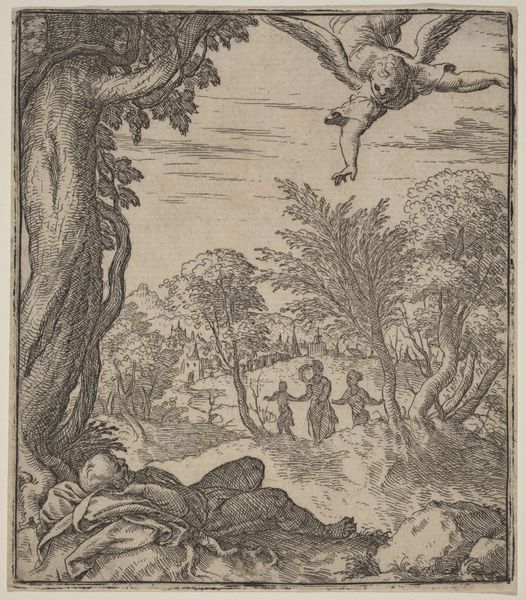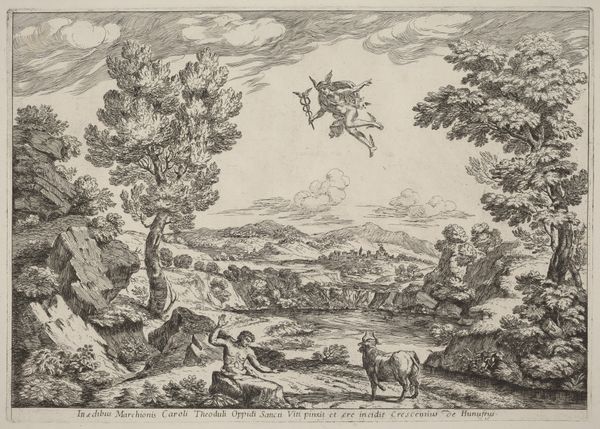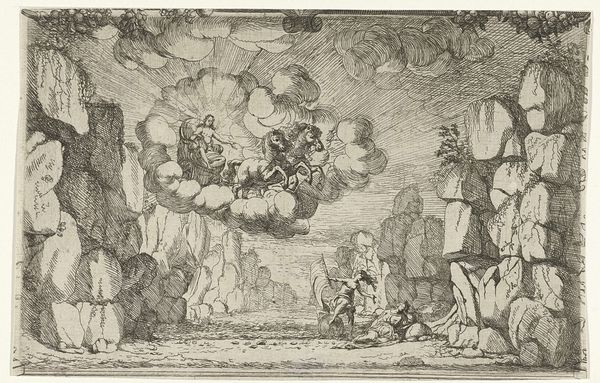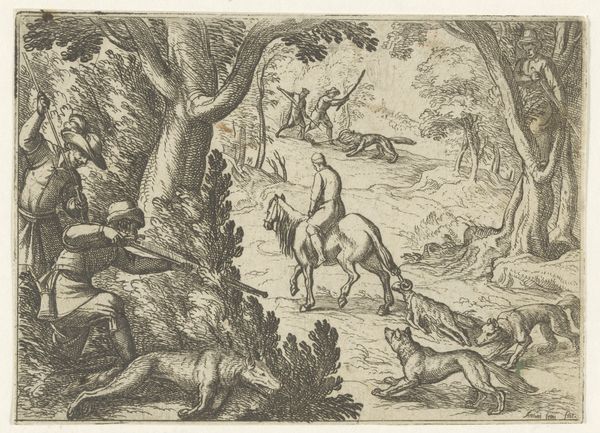
print, engraving
#
narrative-art
#
baroque
#
pen drawing
# print
#
landscape
#
figuration
#
history-painting
#
engraving
Dimensions: height 140 mm, width 194 mm
Copyright: Rijks Museum: Open Domain
Curator: Looking at this print, what strikes you most? It is titled "Landscape with the Death of Adonis," and it's attributed to Antonio Tempesta, dating roughly from 1565 to 1630. It’s currently held at the Rijksmuseum. Editor: Well, the visual dichotomy is quite stark, isn’t it? There's a sense of profound heaviness in the lower register where Adonis lies prostrate, brutally juxtaposed with that buoyant, almost comical goddess floating above in her cloud chariot. Curator: Indeed. And the medium itself, engraving, speaks volumes. The act of incising these lines into a metal plate…it’s labor intensive. Consider the socio-economic implications here: Who commissioned this? What narratives were they trying to circulate and what stories do these materials tell us? Editor: Let’s consider then, how the sharp lines and contrasting tones render the scene almost theatrical. Note how Tempesta uses chiaroscuro to direct our eyes—from the limp body of Adonis to the rampaging boar and then upwards towards the ascending figure of, presumably, Aphrodite. There's a real emphasis on movement and emotional intensity. Curator: And that boar, a creature of labor, of consumption... It’s not simply a wild animal but rather the tool, you might say, of Adonis's destruction. Also, think about how prints such as this democratized access to imagery, influencing and shaping visual culture on a wider scale than paintings could. The way artists collaborated with engravers and the division of labour is also so intriguing. Editor: Quite, but beyond that function of reproduction, Tempesta exploits the capabilities of the engraving technique to construct a powerfully symbolic composition. The positioning of the figures, the contrasting textures – the smooth skin against the rough fur of the boar. Each formal element works to create this emotional effect on the viewer. Curator: This work exemplifies the burgeoning market for reproductive prints during this time, reflecting shifting social dynamics. Consider the audience, the cost of paper and ink, and who had access to visual materials and could even buy them... Editor: Ultimately, by analyzing Tempesta's "Landscape with the Death of Adonis," both the production and consumption are visible. There is both material context of 17th-century printmaking and the intrinsic artistic vision that makes this print continue to resonate. Curator: Absolutely. Reflecting on both aspects grants a better view into our collective image-making and material legacies.
Comments
No comments
Be the first to comment and join the conversation on the ultimate creative platform.
